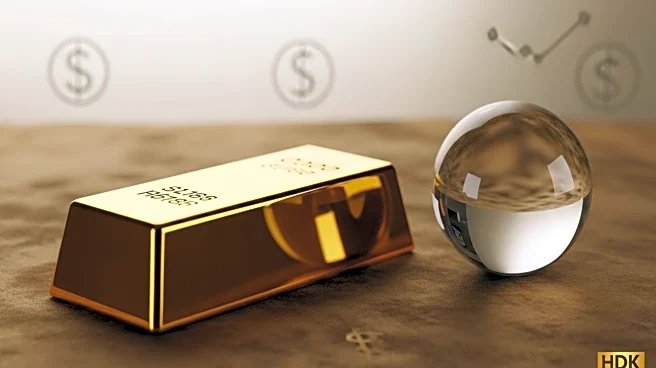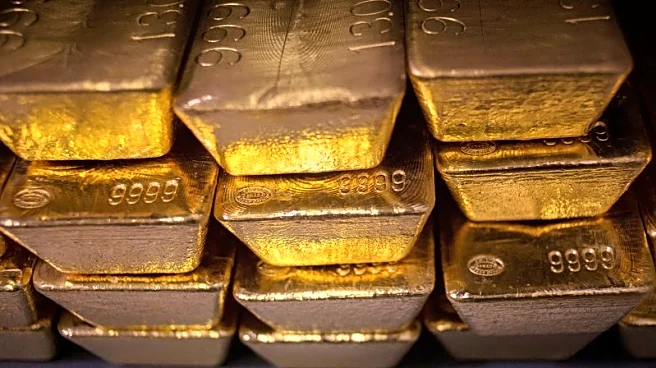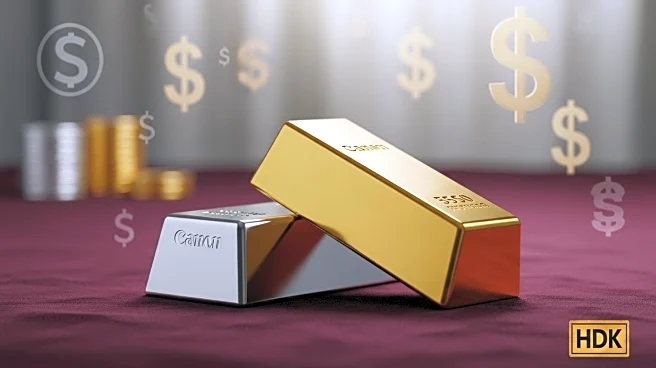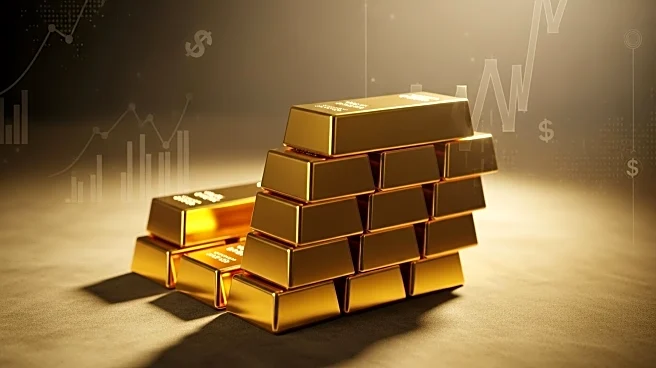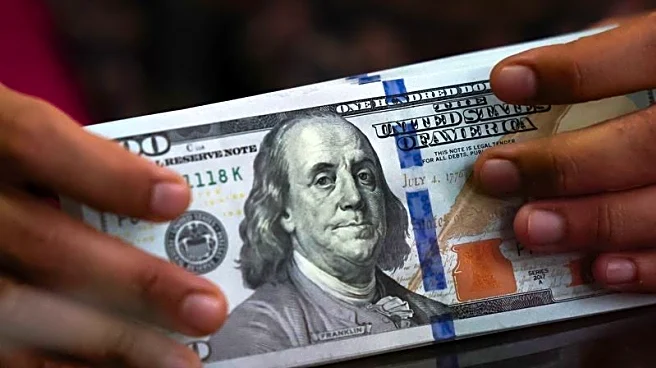What's Happening?
Gold prices have surged to near-record highs, reaching approximately $3,884 per ounce, driven by a combination of safe-haven demand and structural allocation trends. This marks a significant increase of about 47% year-to-date. The rally is fueled by geopolitical tensions, including conflicts in Ukraine and the Middle East, and domestic political uncertainties in the U.S., such as President Trump's reported attempt to dismiss a Federal Reserve governor. These factors have heightened gold's appeal as a hedge against political and economic risks. Additionally, central banks and long-term investors are increasing their gold holdings, further supporting the metal's price rise.
Why It's Important?
The surge in gold prices reflects broader economic and geopolitical uncertainties that are influencing investor behavior. As a traditional safe-haven asset, gold's rising value indicates a lack of confidence in other financial instruments and currencies, particularly the U.S. dollar, which has been under pressure due to the ongoing government shutdown and potential Federal Reserve rate cuts. This trend could have significant implications for global financial markets, as investors seek stability in precious metals amidst volatile economic conditions. The increased demand for gold also highlights a shift in investment strategies, with central banks diversifying their reserves away from the U.S. dollar.
What's Next?
Analysts predict that gold prices could continue to rise, potentially surpassing $4,000 per ounce if current economic and geopolitical conditions persist. Market experts from UBS and HSBC have forecasted further increases, citing falling real interest rates and a weakening dollar as key factors. The ongoing U.S. government shutdown and potential Federal Reserve rate cuts are likely to maintain pressure on the dollar, supporting gold's upward trajectory. Investors and central banks are expected to continue their gold accumulation, reinforcing its role as a critical asset in times of uncertainty.
Beyond the Headlines
The current rally in gold prices may signal a long-term shift in global financial strategies, as central banks and investors increasingly view gold as a core portfolio asset. This trend could lead to sustained high demand for gold, influencing mining operations and potentially driving further exploration and production. Additionally, the geopolitical and economic factors driving gold's rise may prompt broader discussions about the stability of fiat currencies and the role of precious metals in the global economy.



